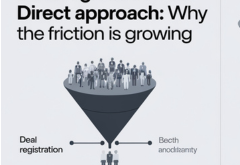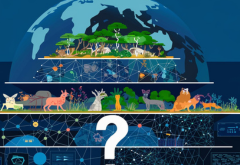For years, cybersecurity and value-added services have been the twin pillars upon which most IT channel partners in India and beyond have built sustainable businesses. These offerings have delivered reliable revenues, sticky client relationships, and a perception of trust in an increasingly risk-sensitive digital world. However, as the global tech landscape pivots toward AI-first strategies, automation, and platform-led ecosystems, the very definition of value in the channel is undergoing a fundamental transformation. The question facing partners now is no longer whether cybersecurity and services are important—they are—but whether that alone is sufficient to survive and thrive in the future. Increasingly, the answer seems to be no.
While cybersecurity continues to dominate IT budgets—with global spending projected to exceed $280 billion in 2025—there’s growing commoditization across the stack. From endpoint protection to managed detection and response (MDR), many offerings have become checklist items rather than true differentiators. At the same time, hyperscalers and security OEMs are building direct marketplaces and automating service delivery through AI, reducing the traditional margin and role of the channel in the process. Customers now expect faster onboarding, tighter integration, and tailored insights—not just resale and support.
This market evolution is pushing forward-thinking partners to reconsider their business model. More and more are exploring the possibility of building their own intellectual property—transforming from pure service providers to co-innovators or even Independent Software Vendors (ISVs). With the rise of low-code platforms, open APIs, and cloud marketplaces, the barrier to entry for creating niche solutions has significantly lowered. A custom compliance dashboard for healthcare, a cloud cost optimizer for SMBs, or a simple onboarding automation tool—each of these could represent not just additional revenue but a critical shift in positioning. Owning even a small piece of software IP gives partners pricing power, brand uniqueness, and increased enterprise valuation.
This doesn’t mean abandoning cybersecurity and services. On the contrary, the most successful players are blending both models. They continue to lead with cybersecurity, but they differentiate by layering proprietary solutions on top—automated scripts, integration connectors, data portals, and industry-specific plug-ins that are built around client needs. This hybrid approach enhances stickiness, boosts profitability, and gives partners leverage in vendor negotiations. Several vendors now even offer co-innovation programs and financial incentives for partners that contribute to their marketplace ecosystem—recognizing that channel-led development accelerates ecosystem depth.
To remain competitive, partners need to act. First, they must identify areas where their teams are already creating repeatable value—whether in reporting, workflow automation, or domain-specific consulting—and assess which elements can be productized. Second, they must invest in upskilling—particularly in DevOps, cloud-native development, and AI integration. Third, they must forge deeper technical partnerships with OEMs and cloud providers that support co-building efforts, including funding innovation sprints or offering technical co-sell programs.
The bottom line is this: cybersecurity and value-added services are necessary, but no longer sufficient. They secure the door but don’t differentiate what’s inside. For IT channels looking to grow beyond transactional sales and protect margins in the age of automation and AI, building IP—no matter how small—may be the key to unlocking future relevance and revenue. The future of the channel lies not just in securing customers but in co-creating with them. Those who evolve will lead. Those who don’t may simply become middlemen in a rapidly disintermediating ecosystem.
 Latest Technology News Today – Get Latest Information Technology Updates and Services Latest Technology News Today – Get Latest Information Technology Updates and Services
Latest Technology News Today – Get Latest Information Technology Updates and Services Latest Technology News Today – Get Latest Information Technology Updates and Services 









